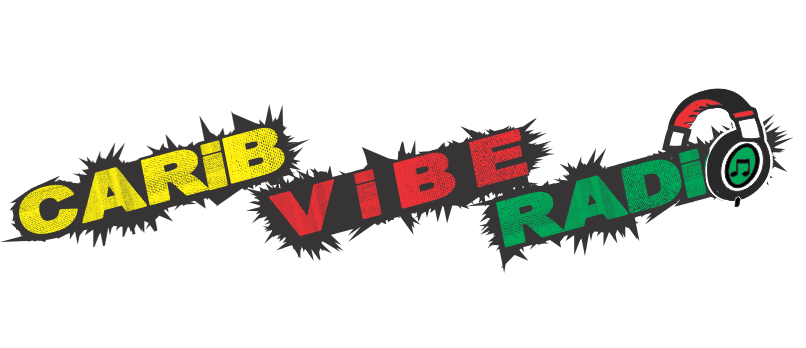THE RACE TO DELIVER: Are the new grocery delivery apps worth it to NYC consumers?
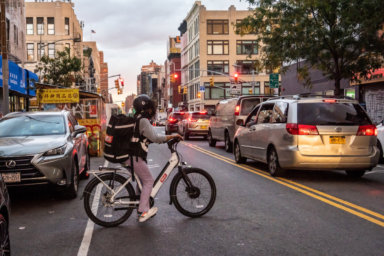
This is the second story in amNewYork Metro’s five-part series examining the proliferation of grocery delivery services across the city — and the impact they’re having on residents and brick-and-mortar business owners alike.
New quick-commerce grocery delivery apps promise to get you what you need within 15 minutes of placing your order — whether it’s a full cart of groceries or just the carton of eggs you need to bake brownies.
But the speed of delivery isn’t the only draw — it’s the cost.
Startups like Gorillas, Fridge No More, 1520 and JOKR advertise free delivery or low delivery charges, and no minimum order price.
On their website, Fridge No More declares “No extra cost for convenience. How are prices so good? Smaller stores = lower rent.” JOKR says their prices are about the same as what you’d find in the local grocery store.
Each of these deliver from a series of small, neighborhood-based “dark stores,” micro-warehouses not open to the public. A smaller store, as Fridge No More says, means lower rent.
“We have less overhead in a small store than a traditional shopping center, and we’re able to have more control over our inventory and our waste cost,” said Tyler Trerotola, U.S. co-founder of JOKR. “Which we can channel back to the consumer through better pricing.”
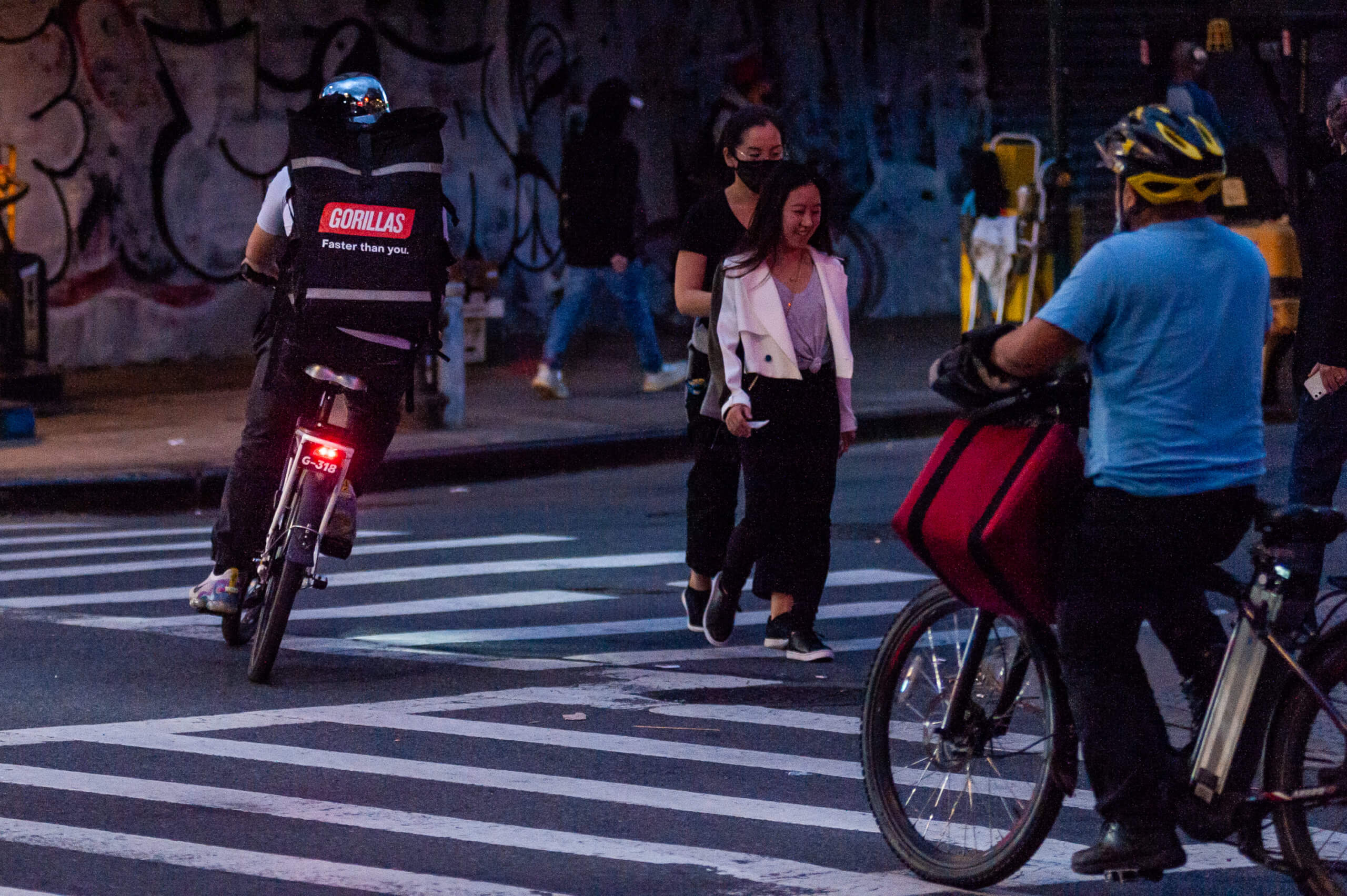
Unlike grocery services like InstaCart, where personal shoppers are sent to existing grocery stores, these companies buy their stock directly from suppliers — there is no middle man.
“Because we own our inventory, we can procure from both your large CPGs (consumer packaged goods) of the world all the way down to your mom and pop shops, and have all of that in the same store for delivery. So we make more margin on all of that,” Trerotola said.
The companies also keep track of what sells and what doesn’t in each warehouse, allowing them to tailor the number of items they order and store – something else that can keep costs down, as they aren’t ordering miscellaneous items that need to be thrown away.
Making a grocery run
Our reporters placed grocery orders from some of the city’s most popular apps – or tried to – to see how prices on day-to-day necessities like eggs, milk, and toilet paper compared to the costs of the same or similar foods on different apps.
Besides promising to deliver your groceries within 15 minutes, “Fridge No More” also offers 50% off the first order. However, the promo code “50Less” had expired. After contacting customer service via their app — they responded within one minute with a quite cheerful sounding message — the rep provided a new promo code, which worked.
The app doesn’t provide the option of sorting their products from lowest to highest priced, so frugal customers have to scroll through the app to find products that meet their budget. If you expect to find “no-name” brands to save an extra buck, you’re out of luck. While “Fridge No More” offers brands that can be found in any supermarket like Pepperidge Farm and Charmin, many of their products are more “high-end.”
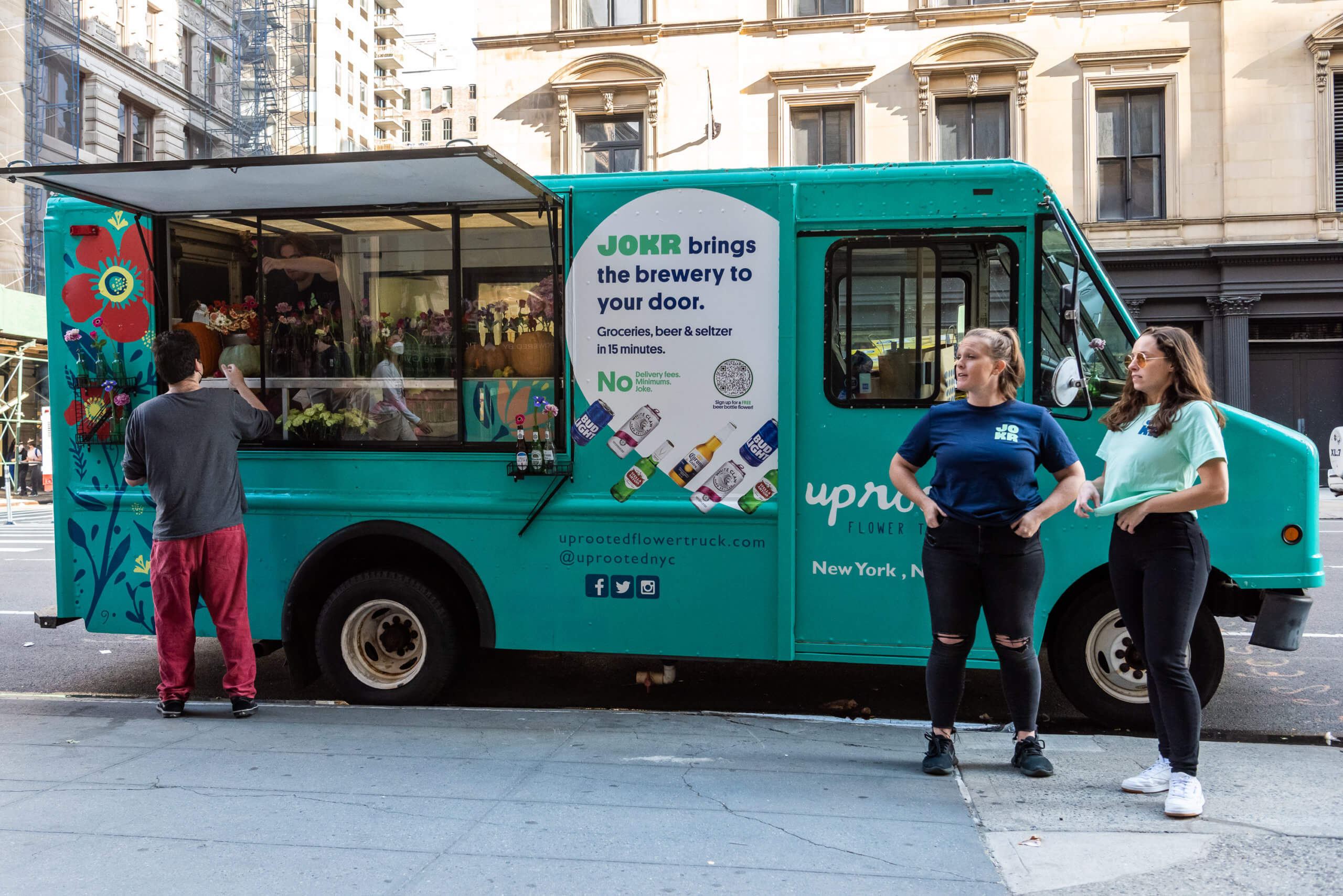
After adding a four-count of “Seventh Generation” toilet paper at $5.29, 10 oz of ground Cafe Bustelo Espresso at $4.19, a dozen large eggs at $3.19, a loaf of white Italian bread at $2.89, a 20 oz bottle of Gatorade at $1,89, Silk Almond Milk for $4.49, and a pint of “Halo Top Ice Cream,” sea salt caramel flavor at $5.29, and one of America’s favorite drinks, Coca Cola, which only comes in cans and small glass bottles — checkout was pretty easy.
The total was $27.23, but with the 50% code, I ended up paying $19.61, including a 20% tip or $5.49 for the courier. The app gives customers the option of tipping between 10, 15, 20, or 25%. The courier receives 80% and the packer 20%. Once the customer confirms the purchase, a page pops up, keeping them up-to-date with the delivery status of their order.
Delivery was swift. Only 9 minutes after placing the order, the courier arrived, handed over the goods, and went on his way.
A four-pack of Scott toilet paper at the “corner store” runs for $6.99, a dozen eggs, cage-free are $4.99, Almond Breeze is $5.99, a loaf of Arnold White Bread is $4.69.
Shoppers who want to get a head start and place an order during off-hours hoping to receive their groceries first thing in the morning are out of luck. Like regular stores, the app is “closed” from 11 pm to 8 am, and orders can’t be placed during those times.
Not everything was easy
Orders placed with JOKR and Gorillas were less successful. Despite both companies advertising delivery in Long Island City, neither had a warehouse close enough to deliver on the border between LIC and Astoria.
Still, filling a cart on the apps was similar in price to filling one in-person, though the same brand discrepancies exist — if you’re hoping to find a house-brand jug of milk or can of vegetables on an app, you’re likely out of luck.
A small order with Gorillas — which was just a hypothetical, since we couldn’t complete the transaction – amounted to $18.84 for the groceries themselves, plus $1.80 delivery fee, $0.28 in sales tax, and a $6 tip — $27.33 in total.
The products themselves were priced similarly to what we found in a nearby Food Universe — a grocery store owned by Key Food — and in some cases less expensive.
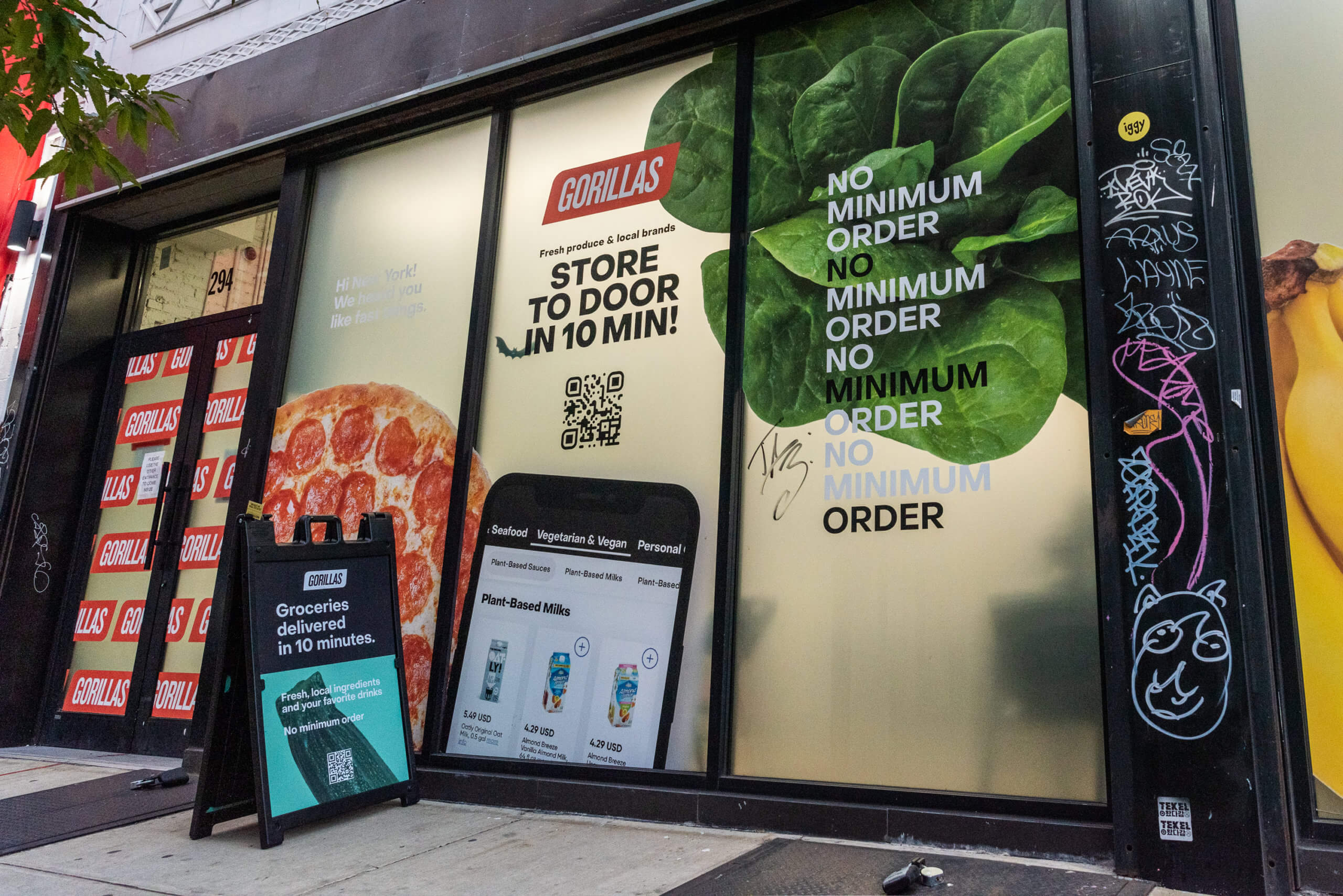
A can of Del Monte Green Beans on Gorillas was 50 percent off, $1.00, a four-pack of Scott toilet paper, $4.99, a 2-liter bottle of Coca-Cola, $2.69, a pint of Ben & Jerry’s Ice cream, $5.29, and a dozen Eggland Large White Eggs, $2.99. What I couldn’t get on Gorillas was a gallon of dairy milk — most of their milks are lactose or dairy-free. I chose 12 ounces of Ronnybrook Farm milk for $1.89, but the real next-best choice was a half gallon of Battenkill Valley skim milk, which runs $4.49.
At Food Universe, the same dozen eggs costs $3.99, though the store was running a “manager special,” on a different brand of eggs — 3 cartons of a dozen for $5. A gallon of 2 percent milk was $3.59, Green Giant Green Beans $1.99, the same pint of Ben & Jerry’s, $5.59, two liters of Coke, $2.49, and a four-pack of Scott toilet paper, $5.29.
At a nearby independent halal grocery store, a gallon of milk was $3.49, as advertised by a sign taped to the front door, 2 liters of any soda, $2.49, and single rolls of Scott toilet paper, $1.49.
We had some more trouble with brands on JOKR. We filled the cart with a bottle of Palmolive dish soap, $2.99 — slightly more expensive than the Food Universe’s most expensive bottle, which was $2.79, but on par with a bottle of Ajax at the halal store – a four-pack of Scott, $3.79, and 2 liters of Coke, $2.29. The cheapest eggs, a dozen Alderfer “humane certified” large eggs, was $3.49, the cheapest loaf of bread, “Mestemacher Fitness Bread,” $3.99, compared to a $2.29 loaf of store-brand Italian bread at Food Universe.
We couldn’t find canned green beans, but the closest item – a 12oz bag of fresh beans — was $3.99, and a half-gallon of Organic Valley 2 percent milk was $4.79.
All together, the haul was $25.51, plus $0.81 in taxes and a $6.00 tip — $32.32 in total. At the time, the app noted that delivery would likely take longer because of the heavy rain.
Of course, your experiences with these apps may vary.
‘It’s an atrocity’
Some aren’t sold on the idea of grocery delivery apps, no matter how convenient or cost-effective the companies promise they are.
Friends Jasmine Lee and Kahlil Robert Irving prefer to support local businesses and know the owners.
Lee, who lives and works in Chinatown, thinks “it’s an atrocity.” She prefers to pick her produce and disagrees that using a grocery delivery app is faster.
“It’s actually not very convenient,” Lee said. “What’s more convenient than just running down the street to your bodega?”
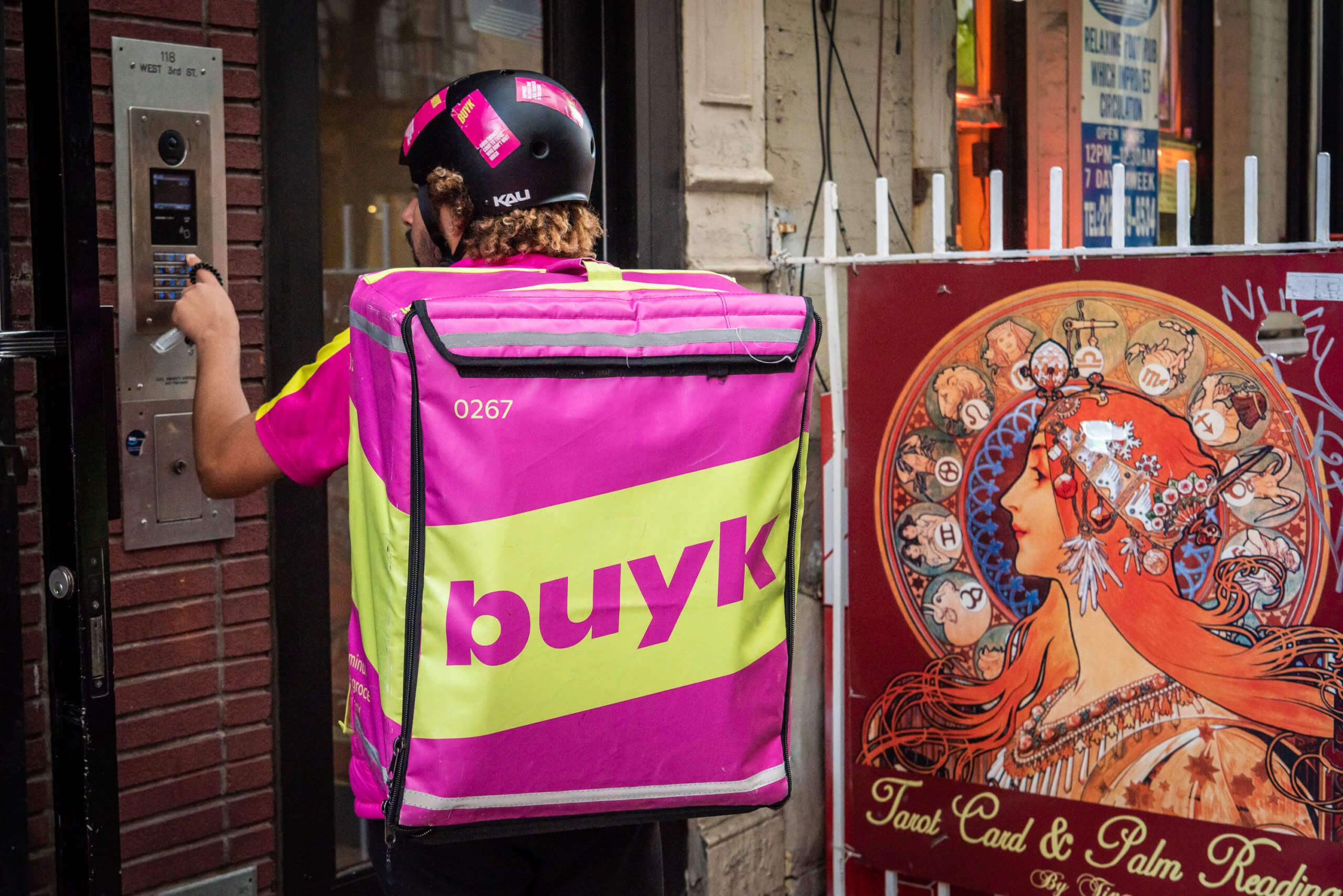
Kahlil Robert Irving, who lived in Brooklyn and now calls St. Louis, Missouri home, felt that the constant evolution of trying to figure out how to make money by offering more convenience was quite problematic for human interaction.
“It’s about being human. This kind of evolution of capitalism is dehumanizing,” Irving expressed. “It’s demonizing the possibility of relationships or sustaining interpersonal relationships.”
David Bishop, a partner with Brick Meets Click, a consulting company that works with “conventional” grocery stores, said those established brick-and-mortars know best.
“The retailer’s inventory ordering system is fairly automated in the sense that it’s looking at historical buying patterns, overlaying that with other causal factors like weather, and incorporating what the current sales trends are to replenish that stock,” Bishop said. “A traditional grocery store has been around a long time, so their understanding of what sells and what doesn’t is far greater than what a new entrant who’s coming in and trying to serve a specific need may be able to do.”
Quick-delivery apps, for now, are focused in dense urban areas. Since each small warehouse serves a small area — maxing out at 2.5 miles, in the case of 1520 — there need to be a lot of people living there.
The cost of purchasing enough land or renting out a large enough building to run a traditional grocery store is much higher in New York City and the tri-state area than in rural areas, Bishop said, so operating out of a store with a smaller footprint, and that doesn’t invite shoppers in, means those companies have “comparable costs, although lower to traditional brick-and-mortar grocers.”
All stores try to reduce waste, he said, because, in the end, it eats into their profits — but he said the proof that carrying fewer items would result in less waste “remains to be seen.”
The third installment of “The Race to Deliver,” scheduled to run on Nov. 4, will focus on the potential and current impacts grocery delivery apps may have on bodegas, grocery stores and other brick-and-mortar businesses.
